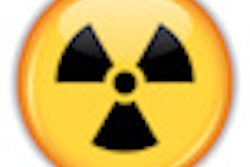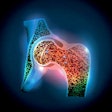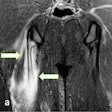
Editor's note: In his regular column, Europe's very own maverick radiologist, Dr. Peter Rinck, addresses the latest controversial topic. Find out now what's on his mind.
A year ago, I wrote an article about airport body scanners and the controversy around them.1 Apparently, some people thought this to be an authoritative text; shortly after its publication, the following lines appeared in Wikipedia's section on airport security with a link to the article:
There are misunderstandings about how x-ray backscatter scanners function, but they do use ionizing radiation and the x-rays emitted from them penetrate clothing as well as skin. While the risk of cancer from a single backscatter check is probably low, the cumulative risk of repeated exposure to radiation is a threat to public health, especially for people working in the airline industry and frequent travelers.
 Dr. Peter Rinck, PhD, Maître de Conférence and visiting professor of medical imaging at the University of Mons, Belgium.
Dr. Peter Rinck, PhD, Maître de Conférence and visiting professor of medical imaging at the University of Mons, Belgium.
After some months, this paragraph disappeared; I have no idea who had written it nor who had purged it. Was it ignorance, politics, or business interests?
However, the discussion about side effects of x-ray backscatter scanners is far from finished. At the beginning of June, the U.K. Royal College of Radiologists (RCR) and the British Institute of Radiology (BIR) published a report on the topic, stating that "airport body scanners are safe, and the public should be informed and reassured regarding their use."2
In a press release, Dr. Peter Riley, consultant radiologist and chair of the BIR's Radiation Protection Committee, pointed out: "All available data suggest that the radiation doses for air travelers and aircrew from airport scanners are tiny. Such doses are only a small fraction of the exposure those same travelers will receive from cosmic radiation as they fly at 30,000 feet. In medicine, the small risk to health from diagnostic doses of radiation is offset by the quantifiable benefits of early diagnosis and treatment; in the airport context, the benefit is one of higher travel security."
This is old news, coupled with unproven hypotheses, and in general, the authors lack lateral thinking. Many people will now think that radiation in small doses is not dangerous, it can be used elsewhere too -- and bureaucrats and politicians will decide what consists of a small dose. As for higher travel security, wishful thinking gives added peace of mind, but there is no proof that the intensified airport controls have any positive outcome.
In the same release, Dr. Tony Nicholson, dean of the RCR's Faculty of Clinical Radiology, added: "Both passengers, and airport and airline workers, have the right to be informed about the levels of radiation they are exposed to. However, they should be reassured that these levels are very low indeed, and are well regulated in the U.K., being subject to the Ionising Radiation Regulations 1999, enforced by the Health and Safety Executive."
Usually, I have no keen interest in reading texts of laws and regulations, but I looked for the mentioned British Ionising Radiation Regulations concerning all employees working with x-rays, which includes all airport security personnel, and found, for instance:
The employer shall ensure that a health record, containing the particulars referred to in Schedule 7, in respect of each of his employees to whom this regulation relates is made and maintained and that that record or a copy thereof is kept until the person to whom the record relates has or would have attained the age of 75 years but in any event for at least 50 years from the date of the last entry made in it.
I doubt anybody will follow these regulations, definitely not the security companies in charge of airport controls.
Two articles published in Radiology this spring paint a more balanced picture. David A. Schauer, ScD, executive director of the U.S. National Council on Radiation Protection and Measurements (NCRP), wrote: "The summation of trivial average risks over large populations or time periods into a single value produces a distorted image of risk, completely out of perspective with risks accepted every day, both voluntarily and involuntarily."3
In the same issue of Radiology, David J. Brenner, PhD, DSc, of the Center for Radiological Research at Columbia University, noted: "From a public health policy perspective, given that up to 1 billion such scans per year are now possible in the United States, we should have concerns about the long-term consequences of an extremely large number of people all being exposed to a likely extremely small radiation-induced cancer risk -- in particular given that there are current practical alternatives that do not involve ionizing radiation."4
"If there were no feasible alternatives to x-ray backscatter scanners, it could certainly be argued that such population risks would be more than balanced by the associated benefits of reducing the risk of a terrorist event," Brenner added. "However, millimeter-wave scanning is a feasible and practical whole-body scanning technology that does not involve ionizing radiation and for which there is currently essentially no mechanistic or experimental evidence of biologic risks. Whatever the actual radiation risks associated with x-ray backscatter machines, the ALARA [as low as reasonably achievable] principle clearly implies that a comparable technology that does not involve x-rays is a preferable alternative."
In his paper, Schauer reasoned: "The public needs answers to the following questions: (a) What are the threats and how does backscatter x-ray imaging of people reduce these threats (i.e., is the benefit greater than the risk)? (b) Has radiologic protection been optimized (i.e., are doses as low as reasonably achievable, taking into account economic and societal factors)? (c) Is there documentation to demonstrate compliance with the annual administrative control of a 0.25-mSv effective dose for a member of the public that National Council on Radiation Protection (NCRP) commentary 16 recommends for individuals undergoing security screening procedures with x-ray scanning devices?"
Schauer also noted that the answers are available, but there is a hitch. "The risk assessment in the Aviation Domain Risk Assessment or any superseding reports would be the logical place to look for answers," he wrote. "The Transportation Sector Security Risk Assessment (TSSRA) is sensitive security information, and the results of the Risk Management Assessment Tool (RMAT) are classified and, therefore, not available to the public."
It's a question about what a society tolerates, and where people draw the line. Most likely in some years from now we will hear the common sentence that retired government ministers and officials of administrations like to utter when admitting mistakes. It always begins: "In retrospect we should have ... ."
By the way, I also would be careful with the information Wikipedia offers (or hides); truth and fantasy have become densely interwoven -- and everybody can add her or his public relation "facts."
References
- Rinck PA. Airport security scanners arouse intense controversy. Diagnostic Imaging Europe. 2010;26(3):13-15. http://www.rinckside.org/Rinckside Columns/2010 05 Airport security scanners arouse intense controversy.htm.
- Riley P, Eatough J, Manhire A, et al. Airport Security Scanners & Ionising Radiation. A Joint Report from The British Institute of Radiology and The Royal College of Radiologists. London, 2011. https://www.bir.org.uk/media/5508/bir rcr airport security scanner report (2).pdf.
- Schauer DA. Does security screening with backscatter x-rays do more good than harm? Radiology. 2011; 259(1):12-16.
- Brenner DJ. Are x-ray backscatter scanners safe for airport passenger screening? For most individuals, probably yes, but a billion scans per year raises long-term public health concerns. Radiology. 2011; 259(1):6-10.
The comments and observations expressed herein do not necessarily reflect the opinions of AuntMinnieEurope.com, nor should they be construed as an endorsement or admonishment of any particular vendor, analyst, industry consultant, or consulting group.
















